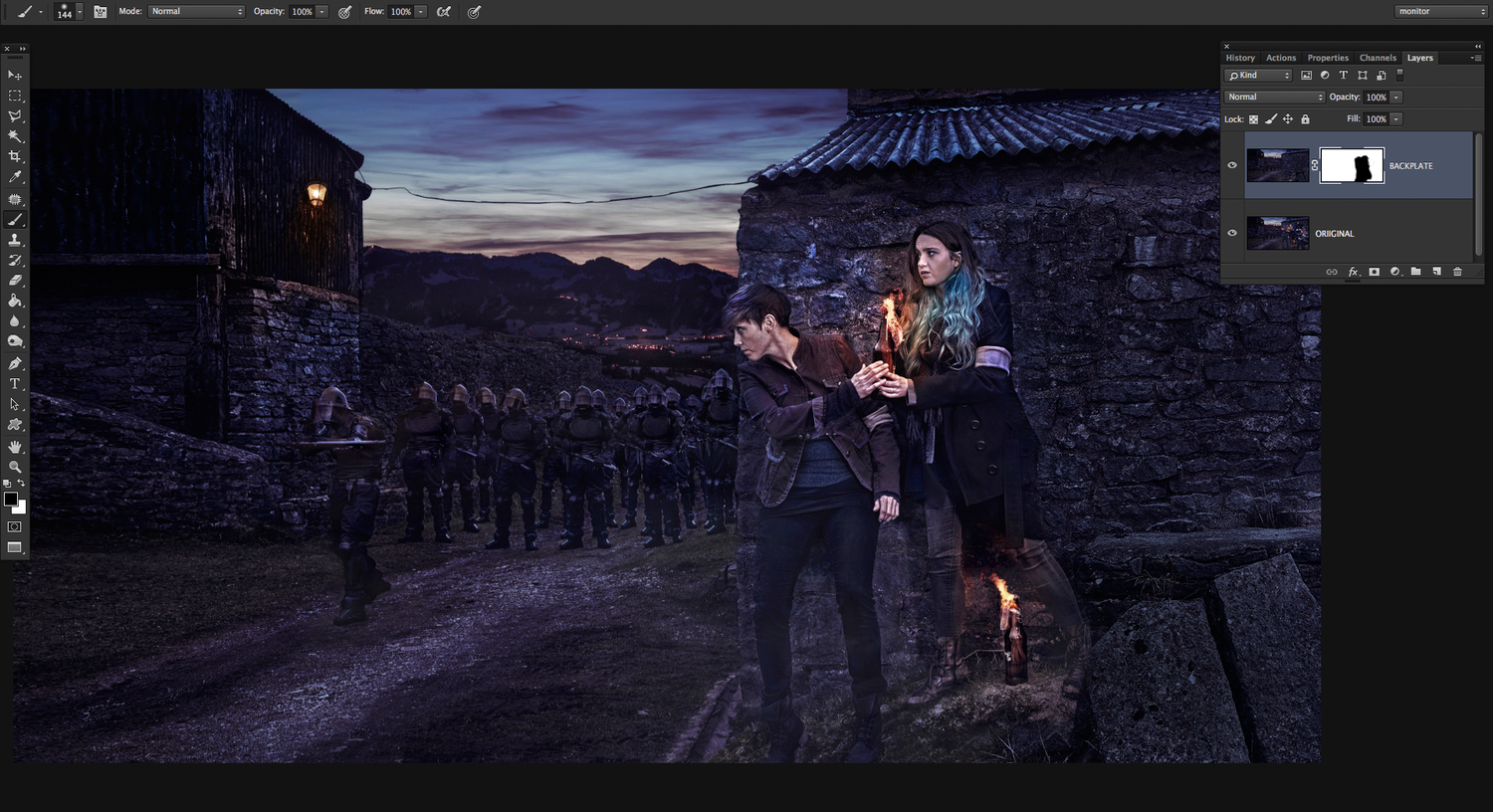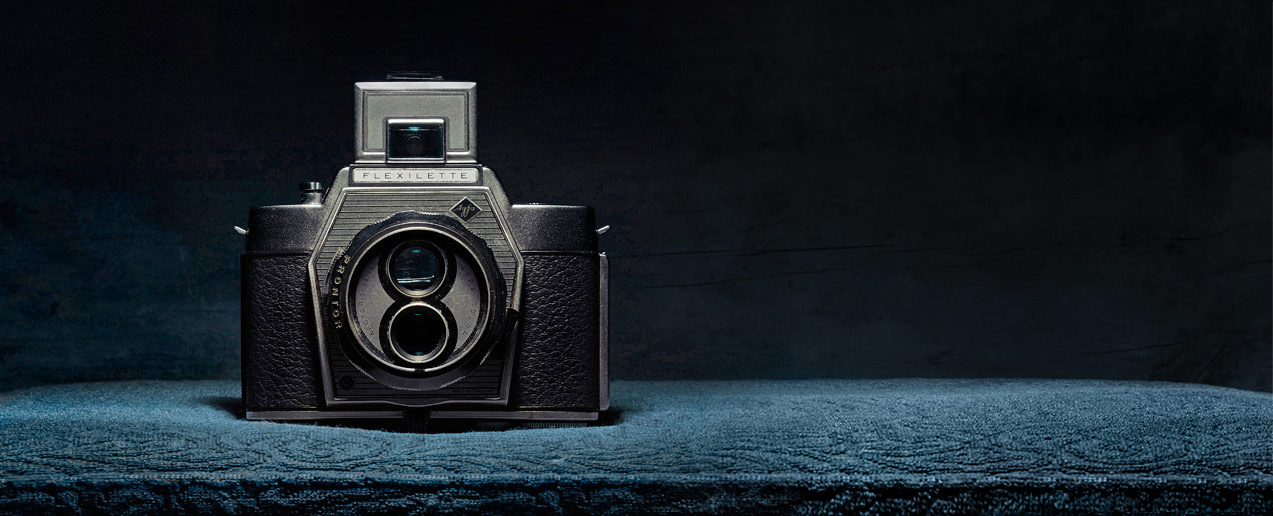It doesn't matter what kind of photography you do, shooting photo backplates each and every time you go out and take pictures is one of the best habits you can get yourself into. Not only does it save many hours in postproduction, it will also help open up a world of creative possibilities to you as a photographer.
For those of you who are not familiar with what a photo backplate is, in a nutshell, it is an image you have captured of the scene without your main subject in it. If you shoot portraits, then straight after you have photographed the people you would also shoot the same image without anyone in it. This practice applies to many different kinds of photography and the goal is always the same: shoot a blank background (photo backplate) just in case you need it later.
Now you might be wondering why it is so important to be wasting time and space on your memory cards shooting blank backgrounds, but I can assure you it is well worth doing. Here are four ways that I personally take advantage of the photo backplate.
1. Removing Objects Easily
We all know how wonderful the content aware tool is for magically removing objects, but sometimes it just doesn't cut it. To be fair to Photoshop the function can only work with the information it has at its disposal. If you wanted to remove someone in a picture who was stood in front of a brick wall and there are no bricks for the program to use, then it stands very little chance of doing an effective job. You could painfully clone in the bricks by hand or maybe consider finding a stock image as a donor and grafting it into the original. Both these options are labor intensive and stand a good chance of looking bad.
This is where having shot a backplate comes to the rescue. All you need to do is process the image in the same way as your original and add it as a separate layer so both versions are in the same file. After that, it is just a case of using an image mask or the eraser tool to remove the areas you no longer want.
In the version above which features the band She Drew The Gun, we can easily remove a band member with very little effort. The beauty of this technique is because we are using an image shot from the exact same shooting environment, the joins are always seamless. No need to worry about the lighting not being the same or trying to match colors. For the sake of shooting one extra frame without the band in it I have now opened up a world of creative possibilities. For those who shoot weddings or product shots, this is equally as useful for removing more unwanted features like annoying photo bombers or unavoidable shadows.
2. Expanding a Canvas

Original Image and Backplate
Sometimes you or a client might decide that you want to drastically change the shape of an image long after it has been shot. Maybe you need some extra negative space to turn one of your pictures into a new business card or perhaps a client has decided they want to use your image as a banner for their website. In the example above it would be virtually impossible to try and change the ratio of the image effectively. Due to the textured surface the camera is sitting on you wouldn't be able to stretch the image without major distortion. Any attempt of cloning the busy design would also look terrible. Thankfully because I shot a photo backplate I could easily blend the two images to any length I need. Not only was joining the two pictures together super easy to do, but as I didn't need to destructively alter any pixels to get the final image I have actually created a file which is almost twice as large as the original. This could come in handy if you have a project where you are printing something especially large.
3. Moving Objects in a Picture
There are times after a busy shoot that you look at an image and just wished something was moved slightly. Maybe a model has moved off their mark and you hadn't noticed or perhaps there is one wedding guest which if moved slightly would turn the composition of an image from good to great. Thankfully with Photoshop, there are many ways to move objects in a picture but if you're lucky enough to have shot a photo backplate then you can do a much more convincing job in a quarter of the time.
I rustled up this example in five minutes to show how easy it can be if you have a photo backplate at hand.
4. Replacing a Background
Once you get into the habit of shooting photo backplates you'll quickly begin to build up an archive of interesting backgrounds that will not only help you out on the job you shot them for, but also for future work too.
Here I recycled the background from earlier and composited a trainer from a completely different shoot. Having your own archive of photo backplates means you don't need to rely on stock images for backgrounds and when a client needs you to recreate something from a previous job you will be able to with ease. This technique comes in handy when a client finds an extra product for you to shoot a few days after you have stripped the setup or have left the location. There have been times when I have shot a fashion image in a boring place and later been able to look back at my archive of photo backplates to make the image much more interesting.
So there you have it, just a few of the benefits of always shooting a photo backplate and why it's a good habit to get into. If this is something you decide to add to your shooting workflow I highly recommend adding it at the start of the shoot as it's all too easy to forget to do it at the end. If you shoot autofocus it's also worth switching to manual just for the backplate so the focus matches the original.
These backplate images are most effective when captured at the same angle and distance as the original and for that reason, a tripod does make the process much easier. That doesn't mean you can't do this while shooting handheld, you just may need to do some extra work in Photoshop to line everything up. For the sake of one extra frame, it's well worth doing. You just never know when or how it could transform an image.
Any of you already shooting photo backplates? Do you have any stories of how one saved the day? Leave a comment below.

















Like you say for the sake of one extra frame it could really save day. Thanks!
It has saved me many times!
Excellent reminder.
It really is a great habit to get into. You just never know when you might need the backplate to save the day...
I think the term backplate comes from the movie industry but I've also heard this practice be called "blank slates", "photo backplates "blank backgrounds". I also got into this good habit from doing catalogue work over here in the UK...
Or simply background. "...ok now I'm going to shoot the background just in case"
for the sake of a frame, it might just save you a headache!
Funny, as a pro retoucher I always advised my photographer clients to do this. Now, when I'm shooting my own work I forget to do it!
haha it's easily done Steve. That's why it really needs to become a habit. It's all too easy to be excited by everything else which is happening while on a shoot. As you very well know, when it comes to retouching it's the one thing you'll be grateful you did!
>In the version above which features the band She Drew The Gun
>we can easily remove a band member with very little effort.
"And that's how I found out I'd been kicked out of the band."
hahaha! that's kinda why I chose to use a band shot.
Stranger things have happened Matt!
it's really so I can photoshop myself into the picture and live out my dream of being a rock star! ;)
ha!
:D so funny!
Many applications for this. Great advice
Peter
Thanks Peter, it really is a great habit to get into...
"it will also help open up a world of creative possibilities to you as a photographer."
seems like that more opens up the possibilities as a compositor. a photographer gets it in the camera?
Sometimes a photographer can't get the desired outcome in camera for technical, financial, geographical, or logistical reasons. The use of a backplate opens up "creative possibilities" to said photographer as a result.
The end product is still regarded but the vast majority as a photograph taken by a photographer...
Never considered this! Nice.
Thanks Paul, for the sake of one extra frame it's worth getting into the habit of doing it. Keep them in a folder for a rainy day...
Is it fair to say this has previously been lost on me because I almost never use a tripod?
It's used a lot commercially when things have to match into other products. That's where I picked this habit up anyway.
You can still take advantage of this technique if you shoot handheld just try your best to shot a backplate at almost the same angle etc. From there hopefully Photoshop's "auto-align layers" will be able to line everything up for you.
All the best!
Great tips, I will have to try this myself.
Cheers Mike! just a few extra frames to add to that 10TB you already have... ;)
One of the greatest habits ever!!! If I could just remember to do it!!!!
hahaha, I've been there Trent! That's why I always try and do it first!...